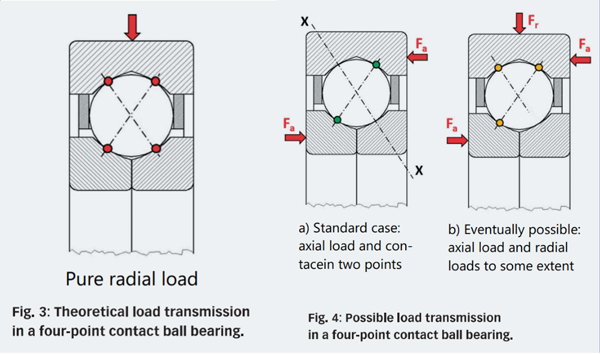The Basics of Four Point Contact Bearings
There are two kinds of ball bearings - angular contact and four point contact. If you're in the market for new bearings, it's best to know the basics about them. Read on to learn about their characteristics, applications, and preload requirements. There are several types of four point contact bearings.

Angular contact ball bearings
Four point contact ball bearings are characterized by a solid outer ring and split inner ring. They contain brass or polyamide cages. Because the inner ring is two-pieced, it is possible to fit a large number of balls in the center of the ring. This type of bearing is only available in specific sizes and cannot be interchanged with other types of bearings.
The four-point contact ball bearing combines the advantages of single-row angular contact ball bearings with those of radial-contact ball bearings. The contact angle between the balls and ring is 35 degrees, making it suitable for biaxial and pure axial loads. Four-point bearings feature machined brass cages, which are easy to handle.
Four-point contact ball bearings
Four-point contact ball bearings are non-self-retaining radial ball bearings. They are similar to angular-contact ball bearings, but the raceways are offset to accommodate axial loads in both directions. The balls in four-point contact bearings are in contact with the bearings at four points under radial load.
The four-point contact ball bearing market is segmented by region: North America, Europe, Asia-Pacific, and Rest of the World. Of these regions, Asia-Pacific is expected to experience the fastest growth during the forecast period. This is primarily driven by growing construction and mineral extraction industries in the region. Additionally, public facility development initiatives are also boosting the market.
Applications for four-point contact bearings
Four-point contact bearings are a special type of ball bearing with a solid outer ring and a split inner ring. They are typically made from brass or polyamide cages and are narrower than double-row angular contact ball bearings. Their two-piece design allows for a large complement of balls. Depending on the load, the inner ring may skew. This can increase running noise, strain the cage, and affect bearing life. The use of synthetic oils and fluids must be checked to ensure compatibility with the cage material.
Four-point contact ball bearings are most commonly used in slow-to-moderate-speed applications. Their relatively large number of balls give them a high load carrying capacity. However, they aren't good choices for applications where axial loads are required but don't require a high speed. High-speed use of four-point contact ball bearings can result in increased wear and friction.
Preload requirements for four-point contact bearings
Preload requirements for four-point contact bearing assemblies vary widely. Some are mandatory and some are not. The difference lies in the load the bearing must carry, and the preload. For example, angular contact ball bearings must have preload, while angular contact roller bearings don't. In either case, preloading is important for a number of reasons.
Four-point contact bearings are commonly used to accommodate axial loads, but can also accommodate radial loads and tilting moments. Ideally, four-point contact bearings should be used as part of a pair on a long shaft. The second bearing should be a radial (C-type) bearing. Using two four-point contact bearings on the same shaft is also not recommended.
- Previous: Angular Contact Spindle Bearings
- Next: Angular Contact and Four-Point Contact Ball Bearings











